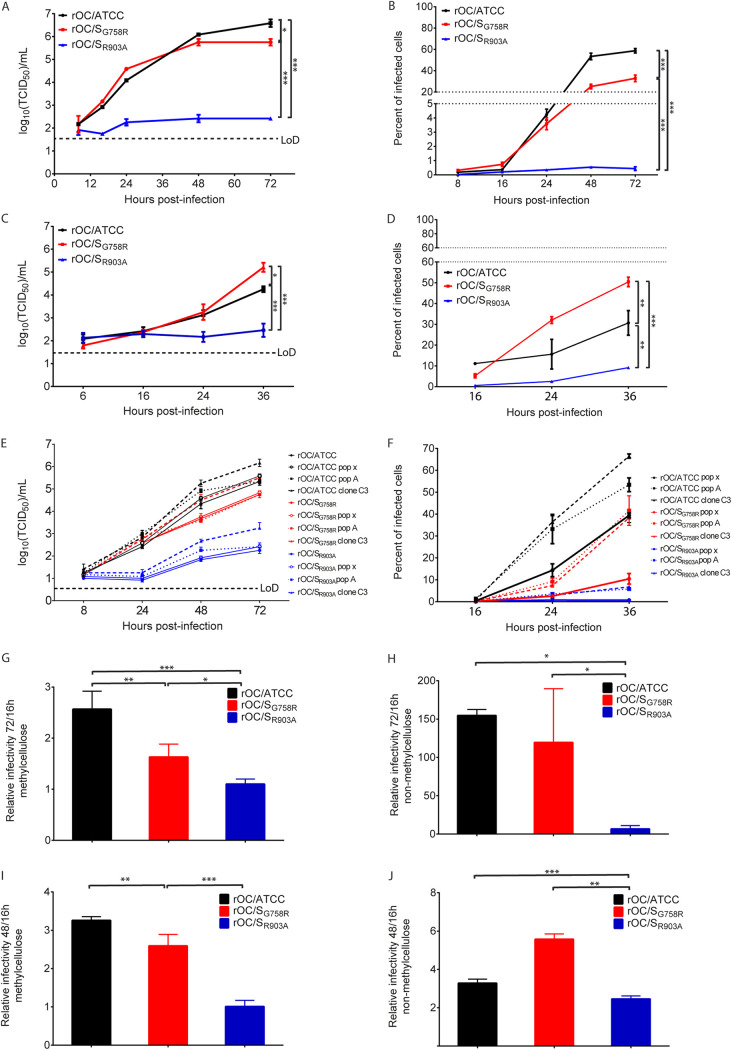FIG 5.
The wild-type S2′ site in S glycoprotein is necessary to efficiently produce infectious viral particles and for efficient propagation in neuronal cell cultures. Differentiated LA-N-5 cells or mixed primary cultures were infected with rOC/ATCC, rOC/SG758R, or rOC/SR903A at an MOI of 0.2 or 0.03, respectively. Kinetics of infectious virus production (A) and viral spreading (B) in LA-N-5 cells, mixed primary cultures from mouse brain (C and D), and LA-N-5 cells ectopically expressing TMPRSS5 (E and F) was determined. LA-N-5 cells (G and H) or mixed primary cultures from mice brain (I and J) were infected (MOI of 0.01) and then overlaid with fluid or semifluid medium for 16 to 72 h as described in Materials and Methods. Cells were then fixed and immunostained. For LA-N-5 cells, MAb against the S glycoprotein and DAPI for cell nucleus were used, and for mixed primary cultures, rabbit antiserum against the S glycoprotein, MAb against the neuronal protein MAP2, and DAPI for cell nucleus were used. The propagation efficiency was plotted as the ratios between the percentages of infected cells at 72 h versus 16 h. Differences were significant (*, P ≤ 0.05, **, P ≤ 0.01, and ***, P ≤ 0.001), and results are the mean values (with standard deviations) from three independent experiments. Cells were counted with CellProfiler software. LoD, limit of detection.

